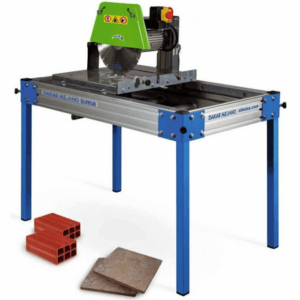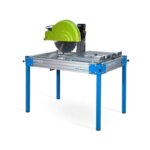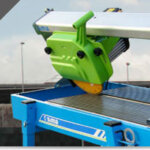
Cutting concrete, granite, and stone is a challenging work that needs specific tools, including masonry saws, floor saws, and, above all, diamond blades. Knowing what a diamond blade is and how to operate it efficiently is essential for generating accurate cuts while maintaining safety and durability of your equipment. Whether you’re a professional or a DIY enthusiast, learning what diamond blades are used for and applying the right techniques can make a significant difference. Following are the ultimate tips to assist in cutting concrete, granite or stone with a masonry saw.
Contents
Plan your cuts carefully, especially when using floor saws
Before cutting, it’s essential to plan thoroughly. “Measure two times, cut one time” may be sufficient for a woodworking endeavor, but when cutting stone or concrete, it’d be more accurate “measure three times, cut one”. Additionally, identify any potential hazards in the material, such as embedded rebar, electrical lines, or gas pipes —particularly when using floor saws—. It helps to know all of these things beforehand, so as to prevent expensive mistakes and serious safety risks. In order to understand the use of diamond cutting discs, and how to perform them efficiently, planning ahead is one of the most important steps.
Choose the right diamond blade for your material
Not all diamond blades are created equal, so selecting the correct one for your material and masonry saw is essential. However, what is going to use the diamond blade depends on the blade’s characteristics and the requirements of your job. Wet cutting diamond blades for wet cutting and dry cutting blades for low horsepower machines and dry cutting are manufactured. In order to prevent damage and accidents, the blade is to be 100% matched to the saw. If faced with choosing between a blade bond that is too hard or too soft, opt for a softer bond; harder bonds can lead to overheating and blade failure.
Inspect your tools before starting
Inspect the diamond blade and the masonry saw before beginning your project to see that they are in good shape. On the blade, see if the arbor hole is damaged, see if it is warped, and look for anything that would have been normal wear and tear. For the saw, ensure that oil levels, belts, bolts, and, if present, power cord are checked. If you’re wet cutting, verify that water flows evenly to both sides of the blade to keep it cool and improve performance. Regular care is very important with regard to knowing and how to maintain your diamond saw blades.
Let the blade do the work
Diamond blades are engineered to cut hard materials efficiently, do not force them. Keep the blade its natural movement through the material, and do not push it hard too soon. Repeatedly forcing the blade or applying lateral force can reduce longevity and safety. During dry cutting, take short, shallow cuts, and allow the blade to cool on occasion to avoid overheating, which can cause cracking. This approach emphasizes the need to understand what a diamond blade is and how it works while cutting.
Wear proper safety gear
Safety should never be compromised when using masonry saws and diamond blades. Always wear protective gear, including eye protection, a hard hat, appropriate clothing, and sturdy shoes. If the equipment is noisy, use ear protection. During dry cutting, always use a respirator mask to prevent inhalation of silica dust that can lead to serious lung injury. Safety of all persons present is only as compelling as knowing what a diamond cutting disc is meant for.





